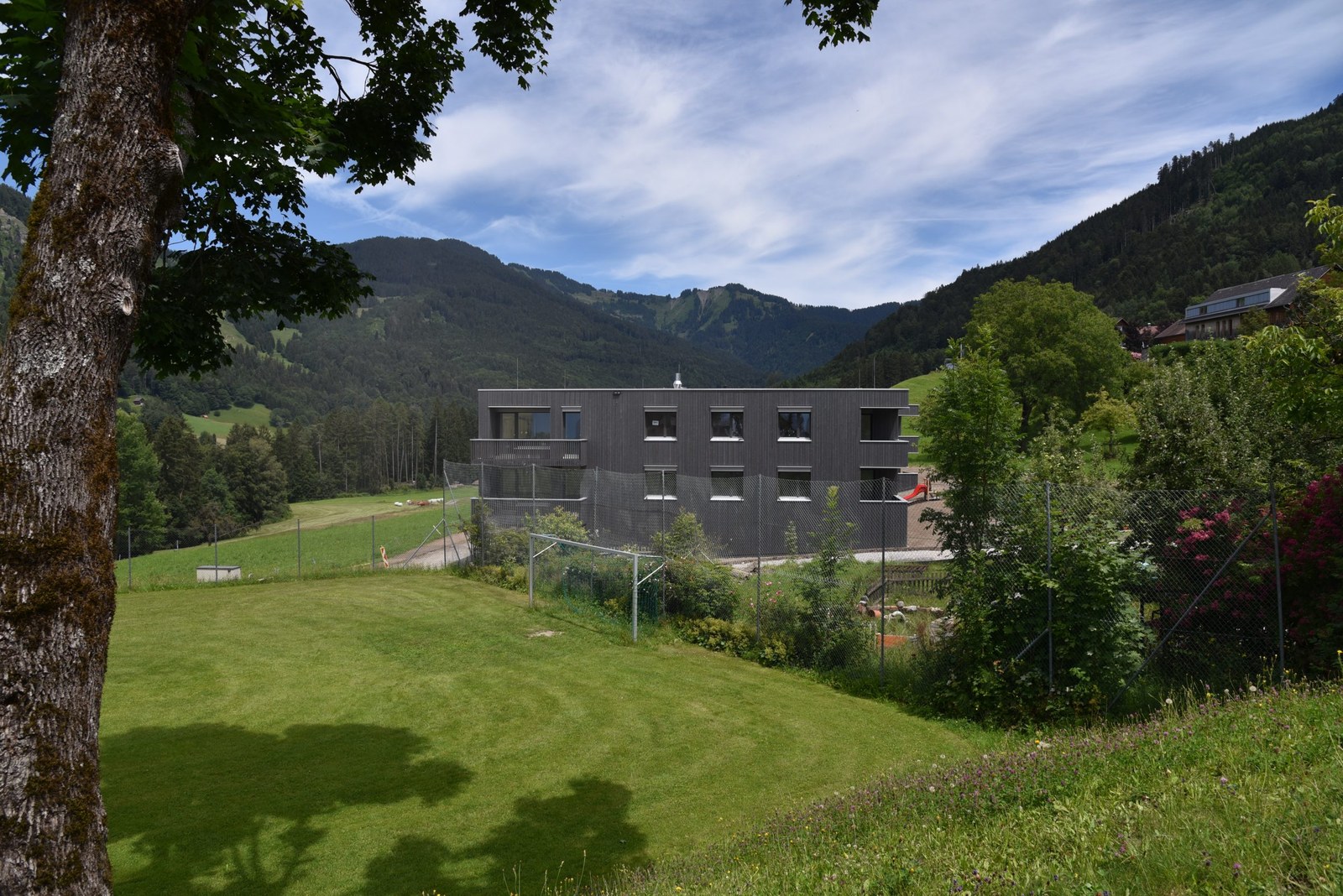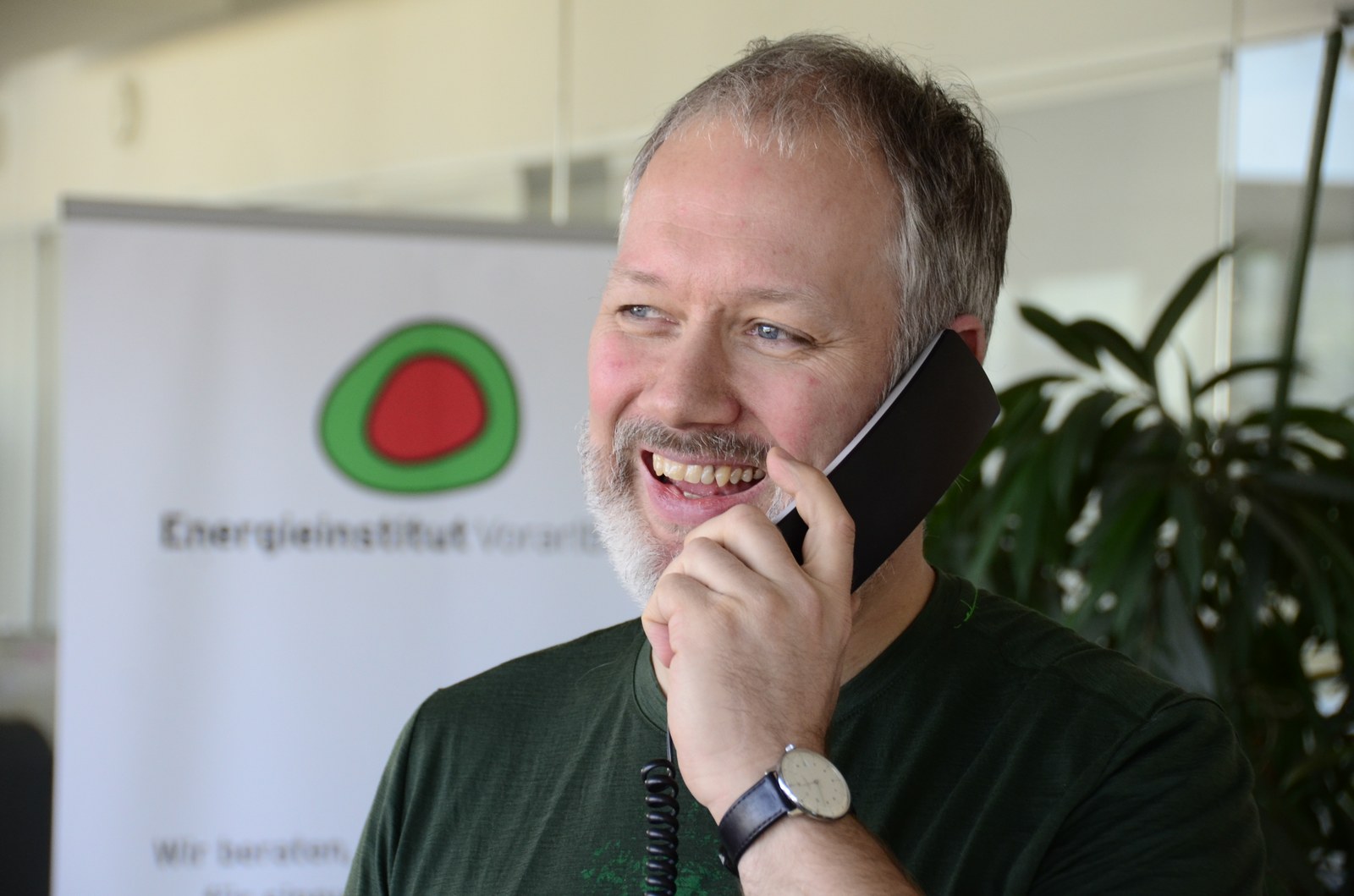Research on residential buildings in Dafins 2018-2022
In the two-year residential construction research project, various hot water distribution systems were optimised, economically evaluated and tested in practice as an efficient alternative to the 4-pipe system. In addition, the use of PV systems of different sizes and orientations was investigated under the changed legal framework conditions (own use of PV electricity).

The concepts were analysed and implemented in two almost identical apartment buildings, each with six residential units. Both buildings have a very good envelope quality and are equipped with comfort ventilation with heat recovery, as this has proven to be cost-optimised over the life cycle.
In a first step, the concepts were optimised in dynamic building and system simulations. The realisation variants were selected taking life cycle costs into account. After completion of the two buildings in October 2020, energy consumption and the most important comfort parameters were measured. The monitoring data was then used as the basis for step-by-step optimisation during operation.
Projectpartner
- Bauherrin: Alpenländische Gemeinnützige WohnbauGmbH
- Architektur: drexelarchitekten, ZT OG Hohenems
- BauphysikHafner Weithas Bauphysik GmbH
- Wissenschaftlicher Partner: Energieinstitut Vorarlberg
- Fördergeber: Land Vorarlberg
Content & targets
The project in Dafins consists of two architecturally almost identical buildings, each with 6 residential units. The content of the housing research project is the practical comparison of different energy concepts for highly efficient, ecological and economically viable apartment blocks.
Targets
- Low energy requirements in the life cycle
- Low life cycle costs for construction, maintenance, operation and energy
- Comparison of a new heat supply concept that combines heating by a central brine heat pump with domestic hot water preparation in hot water heat pumps (cascade hot water heat pumps, ovum system) with a system with a central heat pump for heating and hot water in combination with a PV system
- Energetic and economic optimisation of roof-integrated PV systems, taking into account the use of PV electricity in accordance with the new legal options created by the ElWOG in 2017 (tenant electricity models)
Research questions
The project focusses on the following research questions:
- Can a heat supply concept with apartment-by-apartment hot water heat pumps (cascade DHW heat pumps) and a central heat pump for heating achieve similarly low real energy consumption as optimised systems with a central heat pump for heating and hot water?
- Are the investment and life cycle costs of the system with apartment-by-apartment cascade DHW heat pumps competitive with those of optimised systems with a central heat pump for heating and DHW heating?
- Can summer comfort be improved by the cooling function of the system with cascade DHW heat pumps and how much excess summer heat from the room can the system utilise to heat the hot water?
- How can the legal possibilities of the ElWOG be implemented and tenant electricity models for the utilisation of PV yields be offered?
- Which of the two systems investigated is better suited to utilising the yields of building-integrated PV systems?
- Can the two building services concepts to be analysed be implemented equally advantageously from the perspective of the electricity supplier and the tenant through contracting models?
Approach
Based on the findings from the KliNaWo and Wolfurt-Lerchenstraße pilot projects and using the planning tools developed in these projects, the project will be optimised in terms of energy efficiency and economy. To this end, different design variants of two different energy supply systems are planned, optimised and put out to tender.
The economic, energy and ecological optimisation takes place in the following steps, which build on each other:
- Optimisation of the architectural design through minimally invasive changes (window areas and orientation as well as ventilation concept (position of the ventilation units and design of the distribution network), position of the central heat pump and the apartment-specific hot water heat pumps, areas for active solar systems)
- Optimisation of the building envelope: Both buildings are constructed using the same design and the same envelope quality in order to be able to compare the different building services concepts. Two different envelope qualities (BTV and passive house) are examined to optimise the energy efficiency of the building envelope.
- Vergleich zweier wärmepumpenbasierter Wärmeversorgungskonzepte in mehreren Ausführungsvarianten:
a. Central brine heat pump with energetically and economically optimised distribution system for heating and hot water in combination with PV systems of different sizes (cost-optimised solution in the Wolfurt project)
b. Cascade hot water heat pumps (ovum system) with a combination of a central brine heat pump for heating with hot water heat pumps for individual flats in combination with PV systems of different sizes.
- Optimisation of the ventilation system:
a. Comparison of different systems for comfort ventilation with heat recovery with exhaust air systems
b. Checking the flat floor plans for the applicability of cost-saving cascade ventilation
Questions and answers
1. Can similarly low energy consumption be achieved with heat pumps for hot water in individual flats and a central heat pump for heating as with a central heat pump for heating and hot water?
Both systems were compared in the buildings and both achieve very low consumption for heating and hot water.
2. are the investment and life cycle costs with apartment-based hot water heat pumps competitive with systems with centralised heat pumps for heating and hot water?
The investment and life cycle costs of both systems are very similar in the small apartment blocks analysed.
3. Can summer comfort be improved by the cooling function of the system with cascade hot water heat pumps and how much excess heat from the room in summer can the system utilise to heat the hot water?
The cooling effect could only be investigated after optimisation in 2022. The central heat pump only runs to a minimal extent from June to August, which suggests that the decentralised heat pumps extract heat from the building as a source.
4. How can the new legal possibilities of the ElWOG be implemented and tenant electricity models for utilising PV yields be offered?
The project shows that very large PV systems in apartment blocks can be operated economically with the tenant electricity model. The bureaucratic burden should still be reduced.
5. Which of the two systems analysed is suitable?
